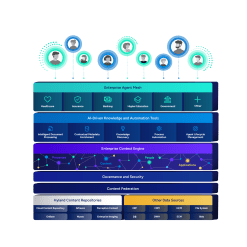Benefits of configuring REST API endpoints with low-code tools
Faster development and deployment
Low-code platforms enable teams to configure and deploy new REST API endpoints in hours, not weeks. This helps organizations respond quickly to changing business needs. This rapid turnaround means you can launch new products or services faster, giving the business a competitive edge.
Greater agility and flexibility
Teams can easily modify or extend REST API endpoints, supporting rapid iteration and adaptation as requirements evolve. This flexibility is crucial for businesses operating in dynamic markets where customer needs and technological capabilities change frequently.
Empowering business users
Nontechnical staff can participate in building integrations, connecting the tools they use every day and reducing reliance on IT departments. This frees up specialized developers to focus on more complex, mission-critical projects.
Improved operational efficiency
REST APIs unify access to data across systems, enabling real-time insights and automation. For example, integrating data from multiple customer support platforms can reveal trends and improve service. By automating data flow, organizations reduce manual errors and free up employees for higher-value work.
> Read more | A guide to reducing operational costs
Breaking down data silos
REST APIs bridge isolated systems, supporting a unified data model and fostering collaboration across departments. When sales, marketing and service teams have access to the same customer data, they can deliver a more cohesive and personalized experience.
> Read more | Overcome Information Silos for Success
Enabling AI and automation
Well-structured APIs make enterprise data accessible to AI and automation tools, driving smarter decision-making and predictive analytics. Clean, accessible data is the fuel for effective AI, and low-code integration is the pipeline that delivers it.
> Read more | Before you invest in AI, assess your AI-readiness















